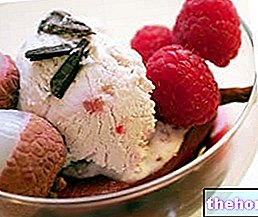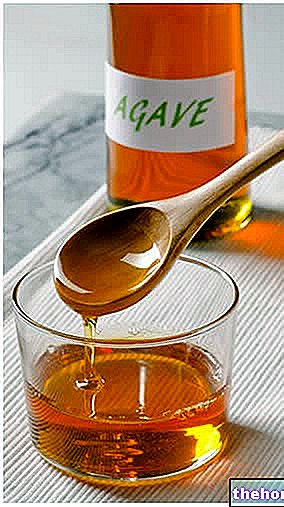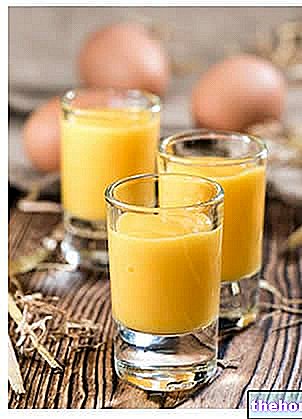What is that
Custard is a basic preparation of international pastry. It is a cooked cream based on egg yolk, milk, granulated sugar, type 00 wheat flour and flavorings (vanilla or cinnamon, lemon or coffee peel, cocoa, etc.).

Recipe and Preparation
The preparation of the custard is quite simple; the necessary tools are a bowl, a medium whisk (better if coated), a spoon, a saucepan, a sieve, a flame spreader, a Chinese colander and, of course, other containers for the various ingredients.
The production of custard can be summarized in 7 steps:
- Heat the milk (without burning or boiling it) with the chosen aroma;
- Separate the egg whites from the yolks and whip ONLY the latter with the granulated sugar; Add the SIEVED flour a little at a time and eventually dilute the mixture with a little hot milk;
- Filter the milk with solid aromas (only if necessary), put it back in the saucepan and add the mixture of eggs, sugar and flour;
- Over a low heat (possibly with the use of a flame spreader), bring slowly back to the boil while continuing to whisk and stir to avoid the formation of lumps (if you are using an aluminum saucepan, be careful not to scrape too much the metal that it could give a greenish color to the custard; on the other hand, if you prefer non-stick pans, scratching them could separate some fragments of Teflon);
- Reach the boil and obtain the desired consistency.
- Sometimes it is necessary to use the custard while still hot, while for other preparations (eg. Those that require the use of a pastry bag) it is possible to let it cool (in this case, protect the surface of the preparation by placing some film or parchment paper to prevent dehydration)
NB. If the custard has lumps, filter it while still hot and semi-liquid with a Chinese sieve or sieve and put it back on the heat.
Custard without Butter
Light custard without butter
Problems with playing the video? Reload the video from youtube.
- Go to the Video Page
- Go to the Video Recipes Section
- Watch the video on youtube
There are as many variations of custard as there are people who prepare it; the most common changes are: the "use of vegetable milk (eg soy) to replace cow's milk, the use of cornstarch or rice flour or potato starch to replace wheat flour, the use of fructose instead of sucrose etc.
Light Custard Cream
LIGHT custard
Problems with playing the video? Reload the video from youtube.
- Go to the Video Page
- Go to the Video Recipes Section
- Watch the video on youtube
Chocolate custard
Chocolate custard
Problems with playing the video? Reload the video from youtube.
- Go to the Video Page
- Go to the Video Recipes Section
- Watch the video on youtube
Nutritional characteristics

Nutritional values (per 100 g of edible portion)
The custard is a sweet pastry preparation and, as such, in addition to having a medium-high energy intake, it is rich in simple sugars; this feature makes it unsuitable for the diet of those suffering from hyperglycemia and hypertriglyceridemia.
The intake of proteins and lipids is not excessive but, in the presence of egg yolks, the concentration of cholesterol is rather high; also this peculiarity makes it unsuitable for diet therapy, in particular for hypercholesterolemic nutrition.
We remind you that classic custard contains cow's milk, therefore lactose, an element potentially responsible for food intolerance in predisposed subjects; for the same reason, we remind you that the presence of wheat flour (therefore gluten) makes the "classic" custard totally unsuitable for celiac nutrition.
Other Foods - Sweets Aspic Cantucci Caramel Candied Citron Chocolate White Chocolate Codette Chantilly Cream Custard Crepes Ice Cream Granita Ice Cream Jam and Jam Marshmallow Marzipan Honey Mustard Nutella Sponge Cake Pandoro Panettone Shortcrust Pastry Sorbet Strudel Nougat Wafer Zabaione Iced Sugar OTHER ITEMS Alcoholic Alcohol Categories Meat Cereals and derivatives Sweeteners Sweets Offal Fruit Dried fruit Milk and derivatives Legumes Oils and fats Fish and fishery products Salami Spices Vegetables Health recipes Appetizers Bread, Pizza and Brioche First courses Second courses Vegetables and Salads Sweets and Desserts Ice creams and sorbets Syrups, Spirits and grappas Basic Preparations ---- In the Kitchen with Leftovers Carnival Recipes Christmas Recipes Diet Recipes Light Recipes Women's Day, Mum, Dad Functional Recipes International Recipes Easter Recipes Recipes for Celiacs Recipes for Diabetics Recipes for the Holidays Recipes for S an Valentino Vegetarian Recipes Protein Recipes Regional Recipes Vegan Recipes




























